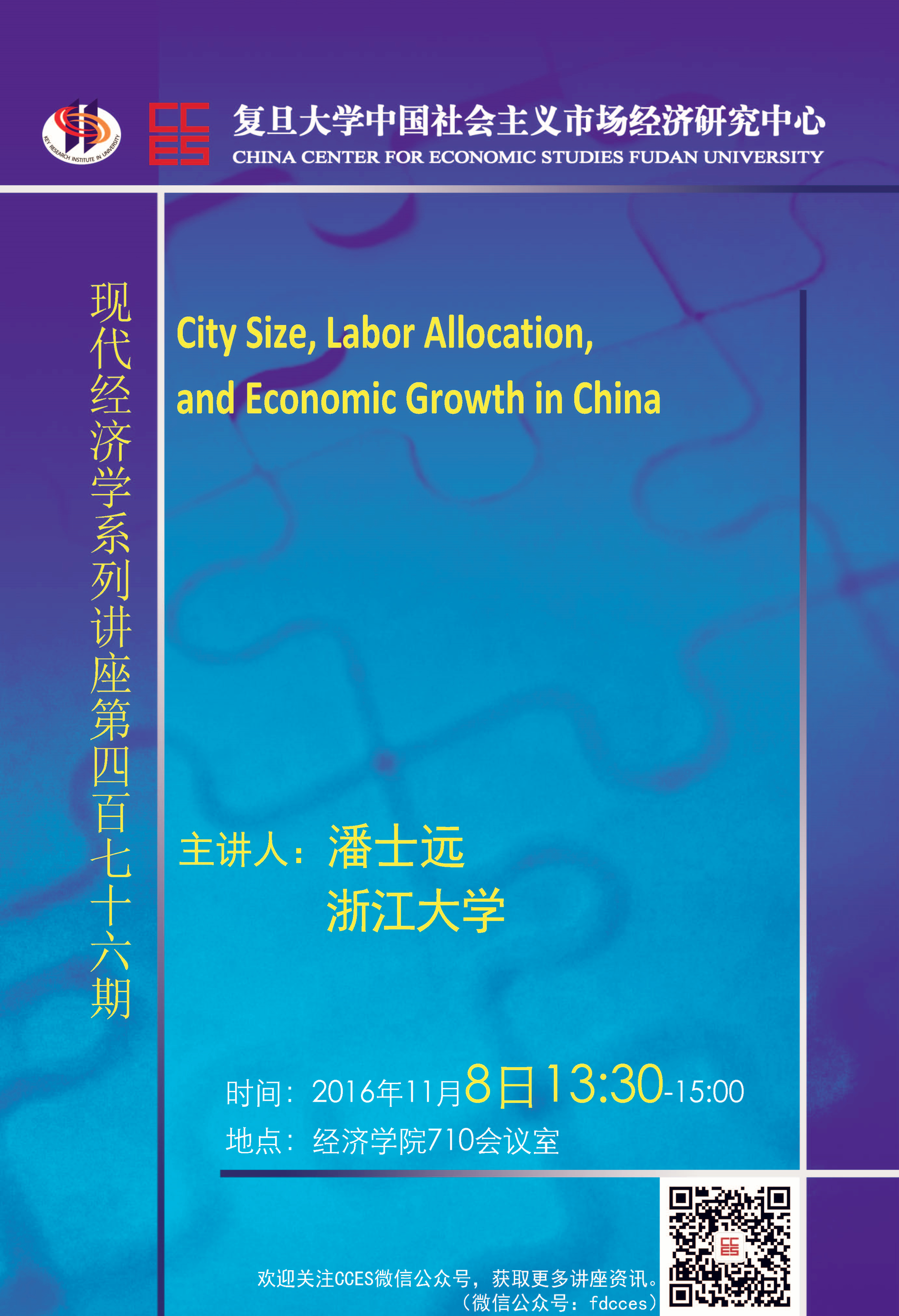
题目:City Size, Labor Allocation, and Economic Growth in China
主讲人:潘士远,浙江大学
时间:2016年11月8日(周二)13:30-15:00
地点:复旦大学经济学院710会议室
Abstract: This paper studies the growth of cities in China and its effects on aggregate growth. Following the approach of Heish and Moretti (2015), we decompose China's aggregate output growth from 1998 to 2013 into the changes in TFP and the changes in wage dispersion between Chinese cities. Using data on 258 cities at prefecture level or above in China, we examine how cross-city differences in worker productivity had changed and calculate each Chinese city's contribution to national GDP growth. Our research produces three key findings. First, we find that the spatial dispersion of wages in China had decreased, which suggests that labor allocation across Chinese cities had improved, thus providing positive gains to China's aggregate output. Second, the actual contributions to national GDP of the largest cities in China are all larger than what one would conclude by simply observing their GDP growth. Third, according to the model-based calculation, GDP per worker of these 258 cities on average grew by about 11% annually from 1998 to 2013. After separating the two main sources of output growth, we find that the growth of local TFP accounted for the majority - about 92.7% - of output growth in the period, while the improvement of labor allocation accounted for the rest 7.3%. Furthermore, it is estimated that, in 1998, the potential GDP gains in the case where all wages across cities were to be set equal and thus labor was perfectly allocated in China were about 45%. Of these hypothetical gains existed in 1998, about 30% has been realized when it reached 2013. This suggests that there are still large potential gains of GDP to be materialized if growth of cities in China continues the current trend.